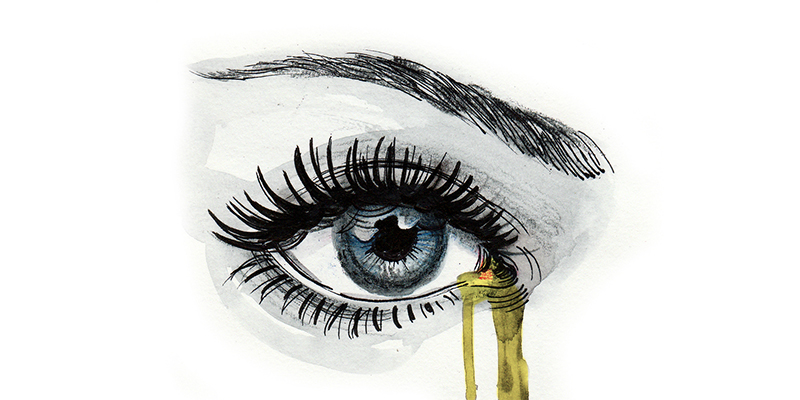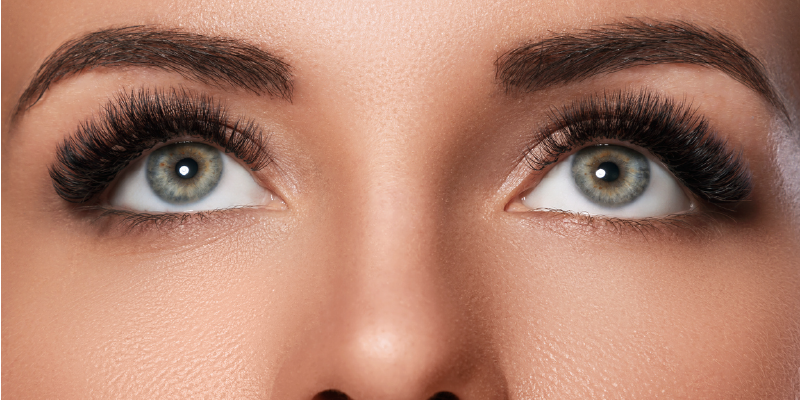So you think you know everything there is to know about your eyes, do ya? We don’t doubt that you know a lot about your eyes. But we’re betting you never heard these little known facts about the human eye!
- Doctors have yet to find a way to transplant an eyeball.
Can you believe that one? We can walk on the moon and land on mars. We can transplant a heart and a liver and a kidney and even corneas and other organs, but not our eyes. The optic nerve that connects the eye to the brain is way too sensitive to reconstruct successfully. “When you switch out an eyeball you have to completely cut all connections between the optic nerve and the eye,” explains Dr. Jeffrey Goldberg, Director of Research at the Shiley Eye Center at University of California, San Diego. “So then you need to reconnect the donor eye’s nerve fibers back to the recipient’s brain in order to achieve vision restoration.”
2. All blue-eyed people are related.
Chew on that one for a while! A loooooong time ago, all people had brown eyes. The first person with blue eyes was thought to have been born between 6,000 and 10,000 years ago. If your eyes are blue, you share common ancestry with every other blue-eyed person in the entire world! It’s caused by a genetic mutation to the OCA2 gene.
Blue and green eyes are recessive traits. Even if no one in the past few generations of your family had blue or green eyes, these traits can suddenly pop up in later generations.
3. Only about ⅙ of the human eyeball is exposed.
That’s right. Way less than one half of your eyeball is kept hidden away from the rest of the world. Only about one sixth is visible. The average size of an eyeball is about an inch in diameter, and it weighs about a quarter of an ounce.
4. Your eyes are pretty amazing.
We didn’t say that because we think you’re beautiful (though you are!). Your eyes and brain work together as a perfect team to give you the awesome vision you possess.
Each of your eyes has a small blind spot in the back of the retina, right where your optic nerve attaches. You have no idea that hole in your vision exists. There are several theories as to why. Some experts believe that our brains fill in the blind spot based on surrounding detail and information from the other eye. Other experts theorize that our brains simply ignore the blind spot.
When your retina “sees” in image, it sees it upside down and backwards. Your brain automatically makes the adjustment to orient it properly (sort of like your camera), all at the same time that it’s combining the two separate images from your two eyes.
5. Your eyes have, like, superhuman strength!
The muscles of your eyes are incredibly strong. In fact, they’re about 100 times stronger than they actually need to be to perform their functions.
Not only are they strong, but they’re highly active, too! Out of all the muscles in your body, the muscles that control your eyes are the most active. The eye has over 2 million moving parts. On top of that, you blink about 15-20 times in one minute. That’s a whole lot of activity! Women blink almost twice as much as men, and older women blinked more frequently than younger women.
We’re not done yet! Your eye is also the fastest reacting muscle in the body and can contract in less than 1/100th of a second.
6. Your eyes really are the windows to your soul.
Humans seek visual cues by looking into the eyes of another human. There is only one other animal in the world that does that, and it’s the dog. But interesting enough, dogs only do it when interacting with humans, not each other.
7. Sometimes it pays to be a woman.
There are a few women that can see 100 million colors. These ladies have an extra retinal cone in their eyes, thanks to a rare genetic mutation called tetrachromacy. Only about two percent of women have it.
8. Your tears will never evaporate.
Human tears can’t evaporate because they’re not made of just straight water. They’re a combination of three main ingredients: oil, mucous, and water.
9. Your eyes are vastly unique.
Let’s put this into perspective. Your fingerprint has about 40 unique characteristics that distinguishes it from someone else’s. On the other hand, your iris has 256. Retinal scans are highly useful, as well. A retinal scan is a biometric technique that uses very unique patterns in the blood vessels on your retina. Either one is a useful identifier, making your uniqueness stand out!
10. You can be afraid of eyes.
We suppose if you thought long and hard enough, you could come up with a reason to fear just about anything. The fear of eyes or eye care is ommetaphobia. Being afraid of eye care can have a serious impact on your eye health! There really is nothing to fear, but sometimes that’s easier said than done.
If you take good care of your eyes, eat a diet rich in vitamins and minerals and Omega 3’s, you should have nothing to fear from your eye doctor! Caring for your eyes means cleaning around them properly, too. Using Cliradex products provides safe and gentle deep cleaning for your eyelids and eye area. Cliradex uses natural ingredients, and contains no parabens, fillers, artificial colors, or alcohol.




